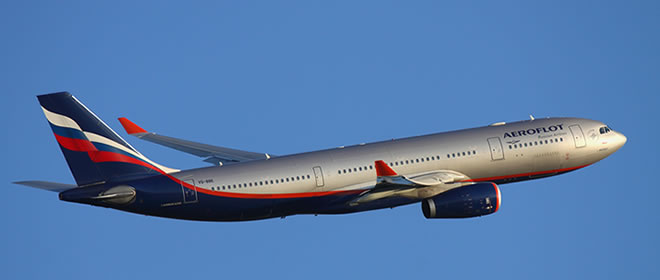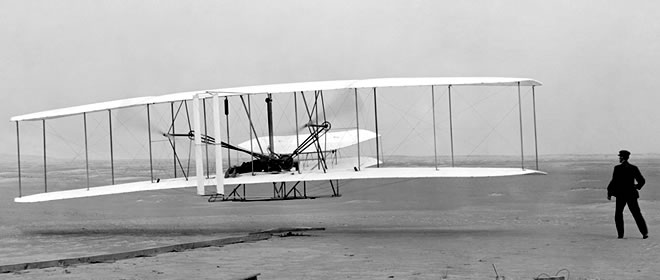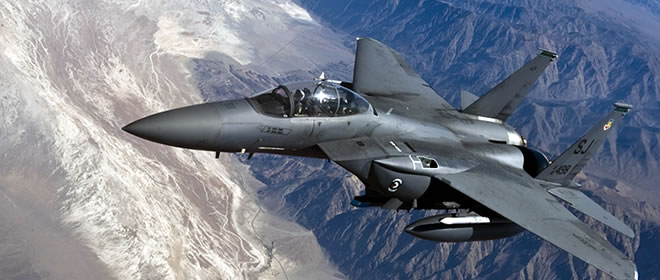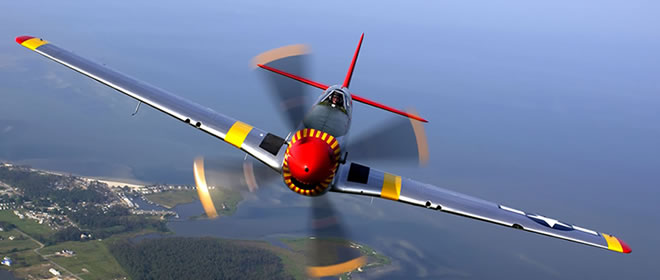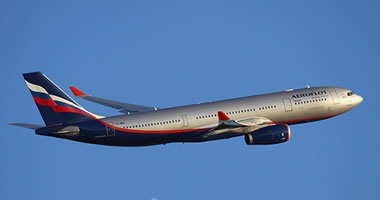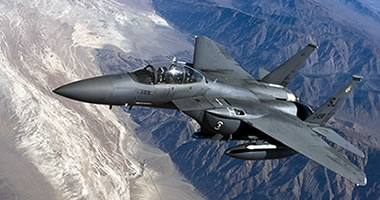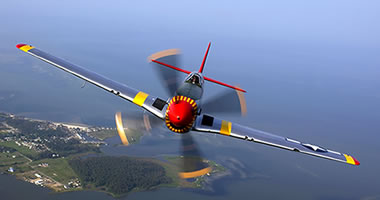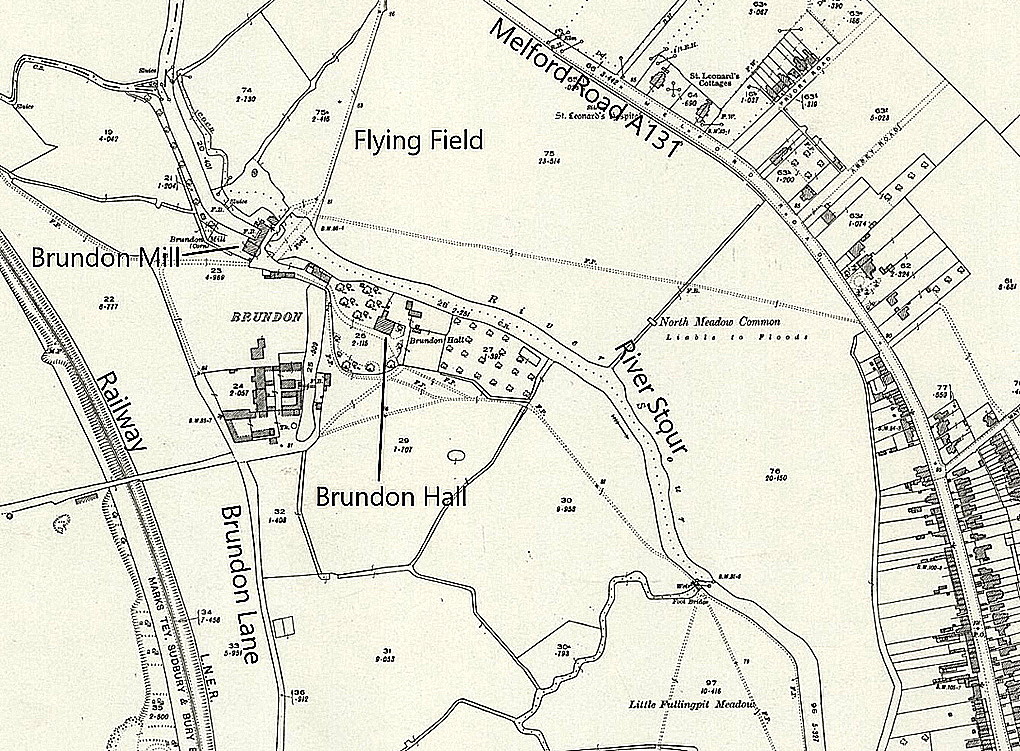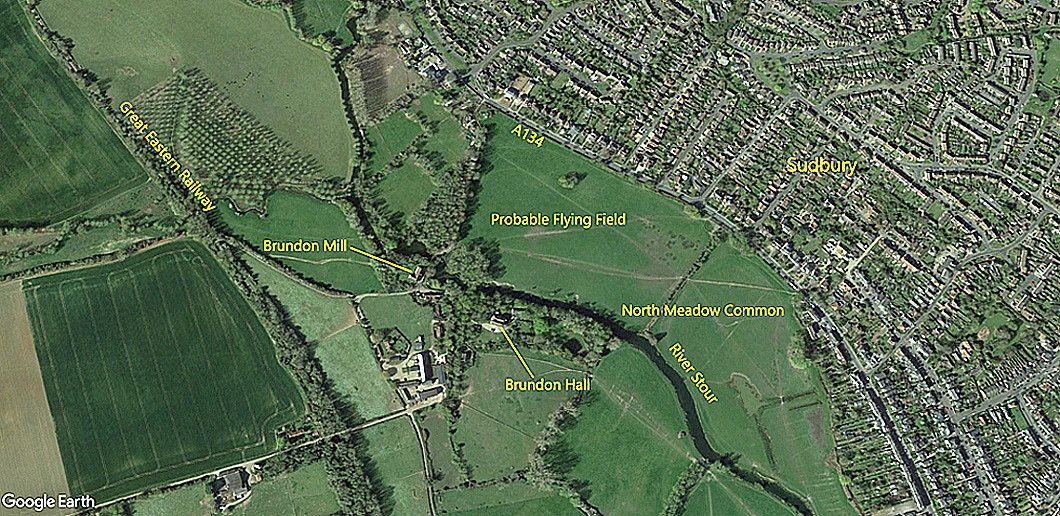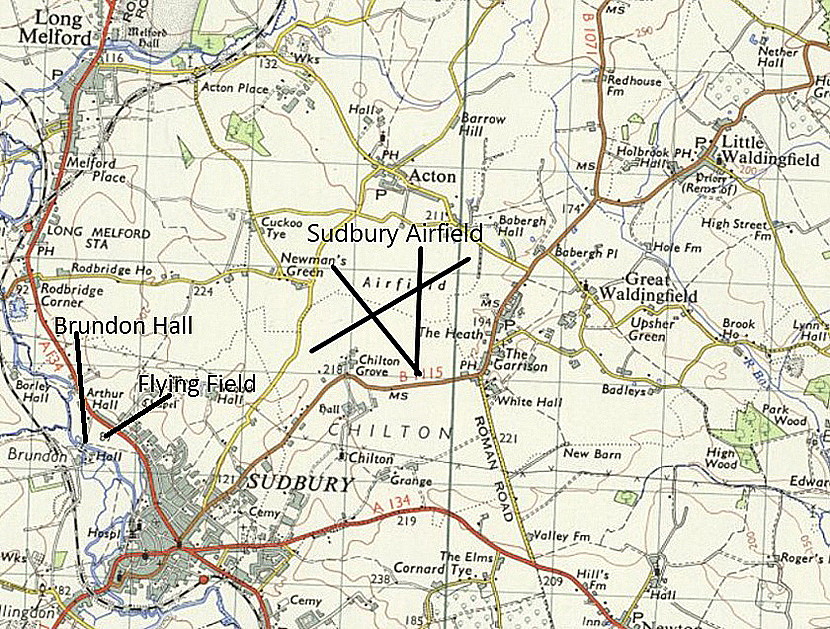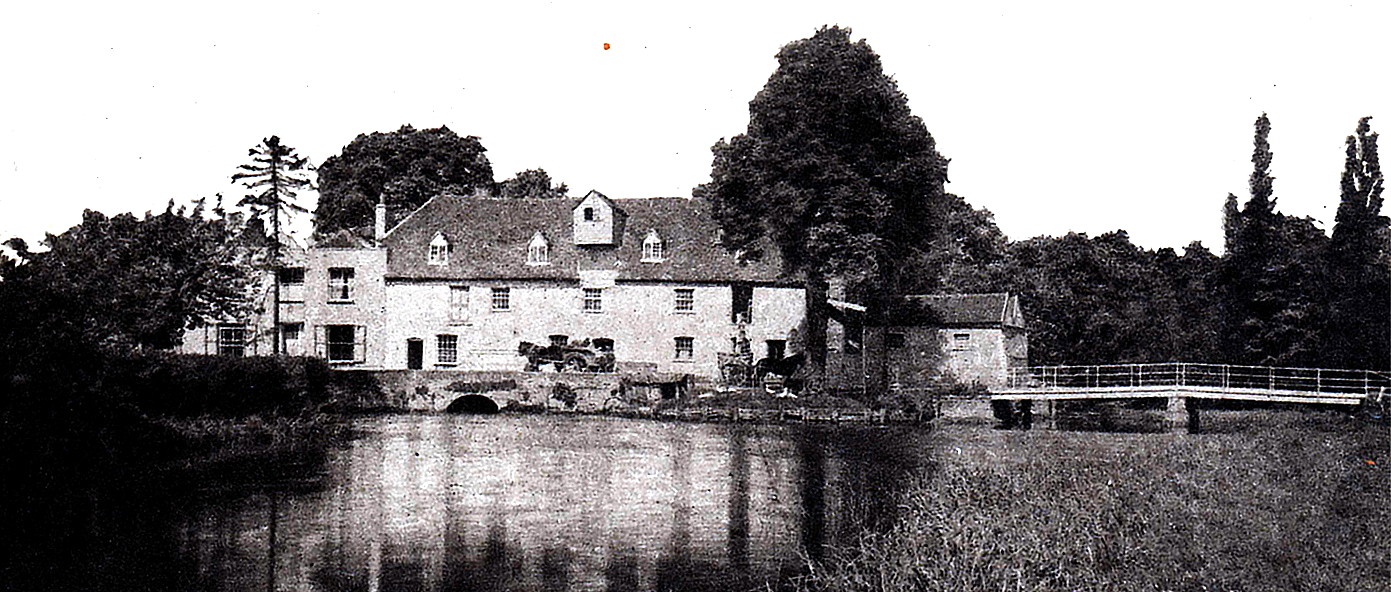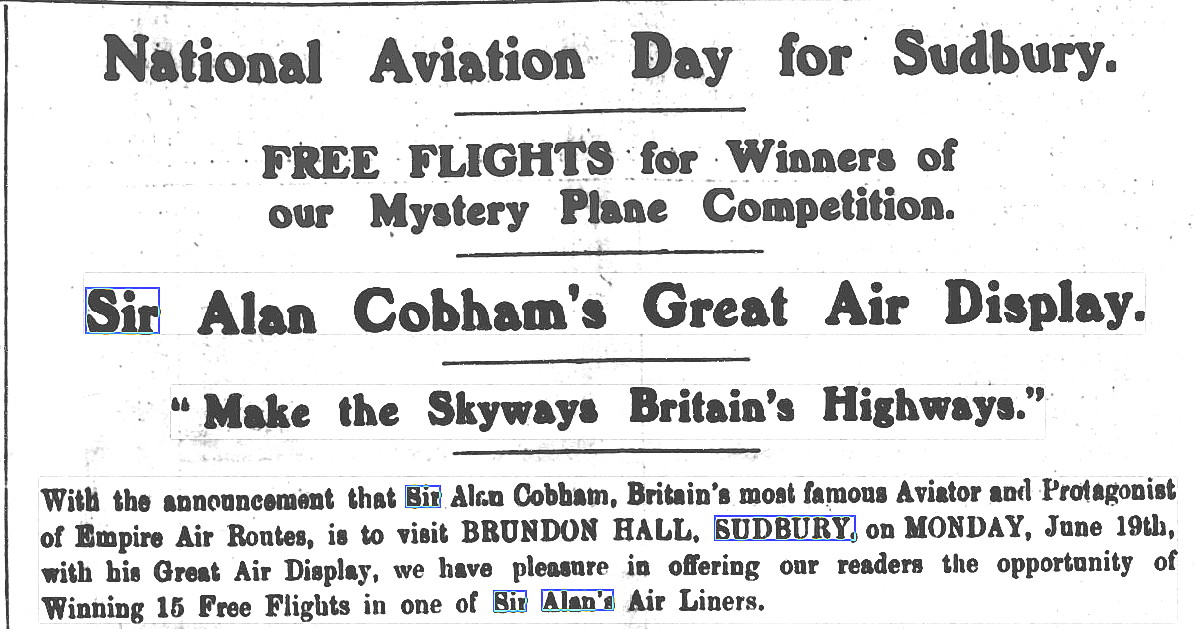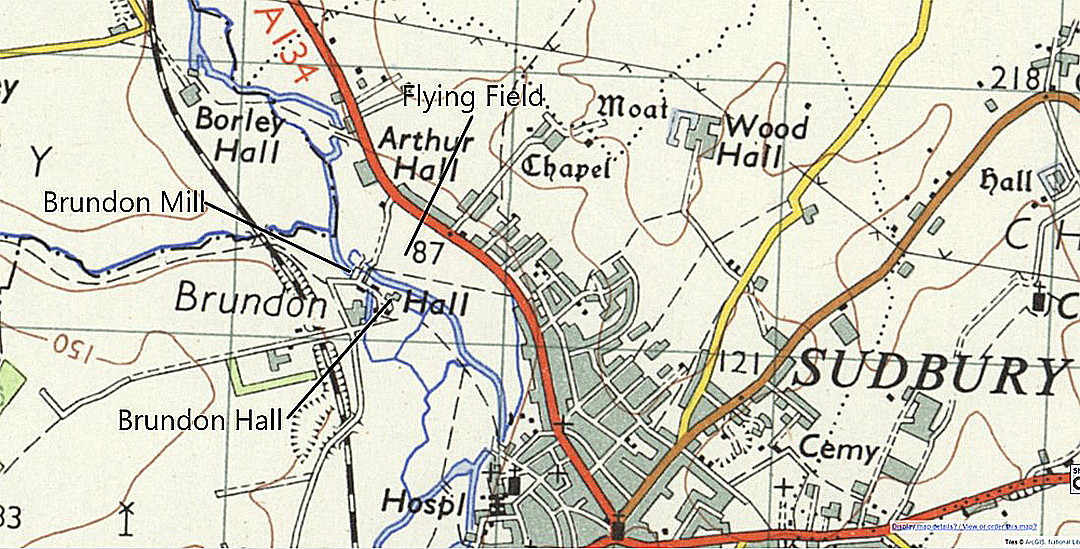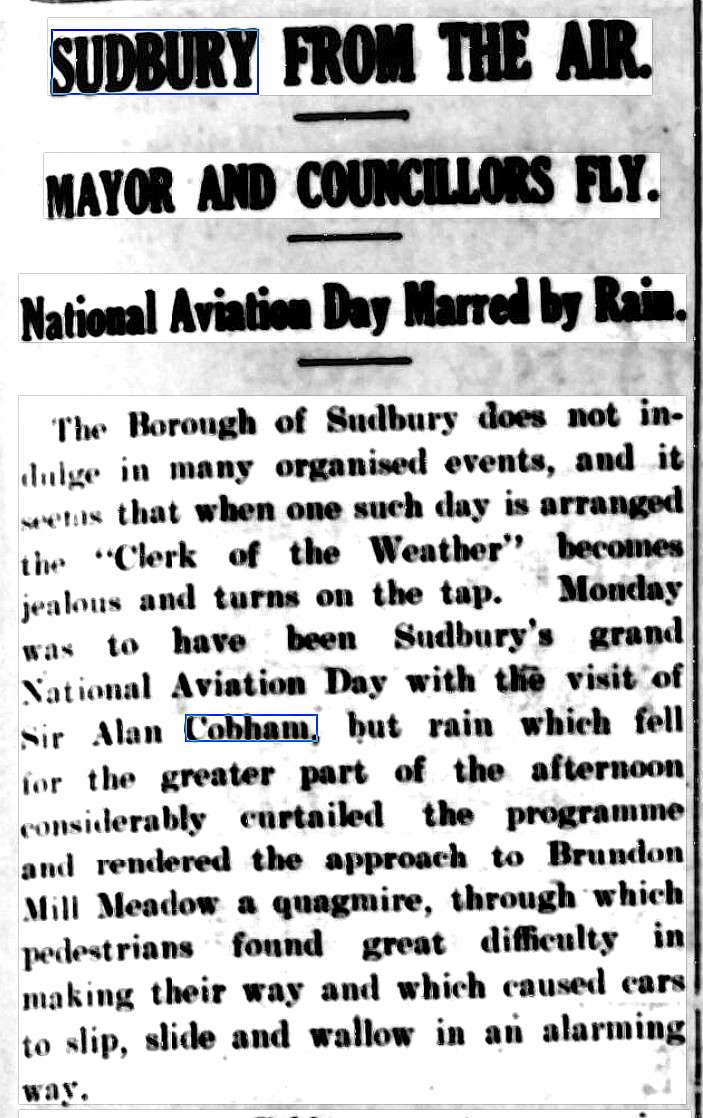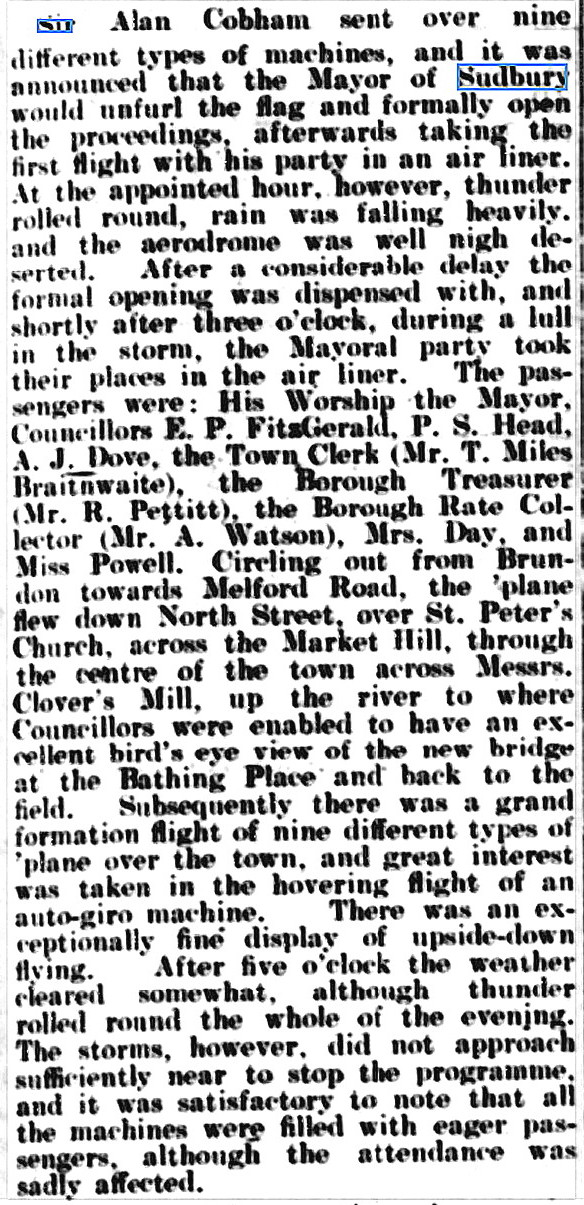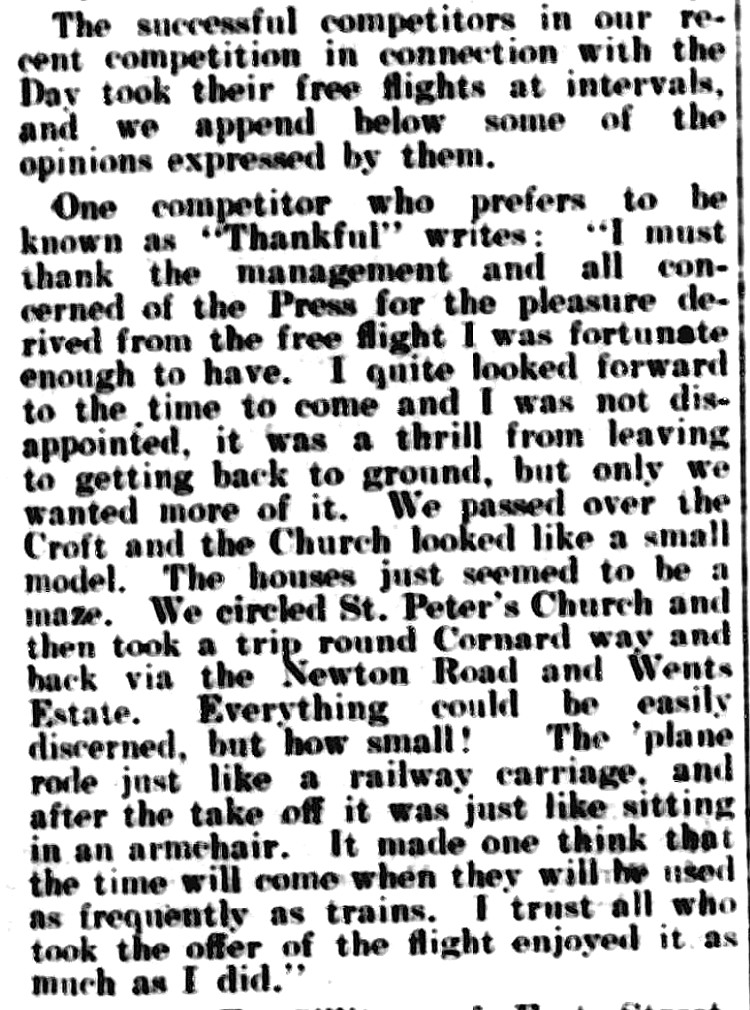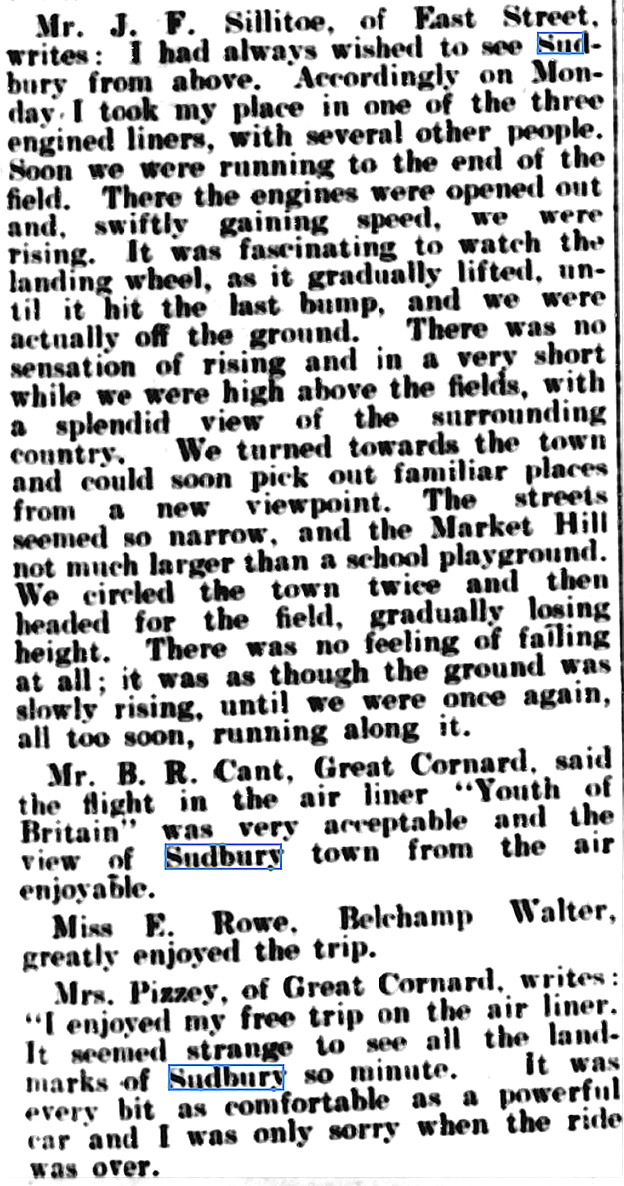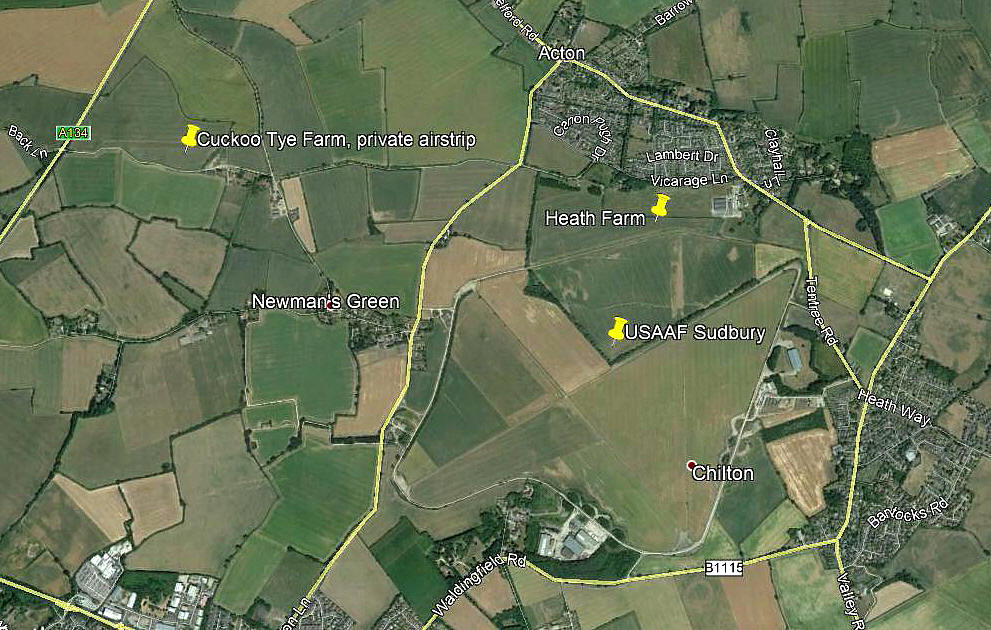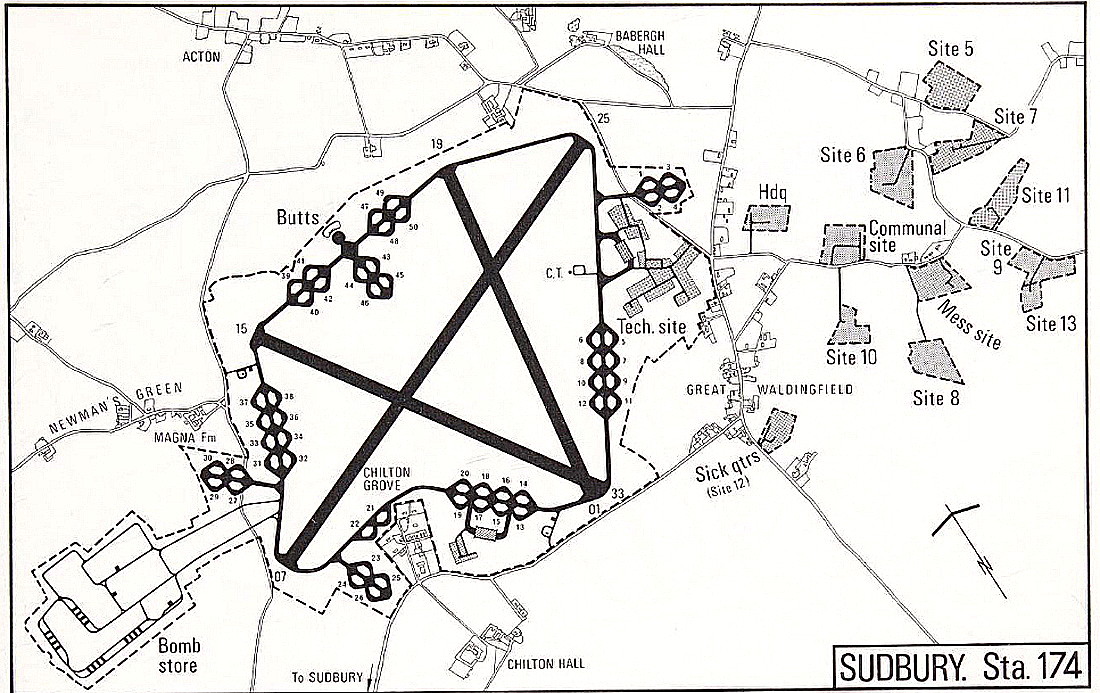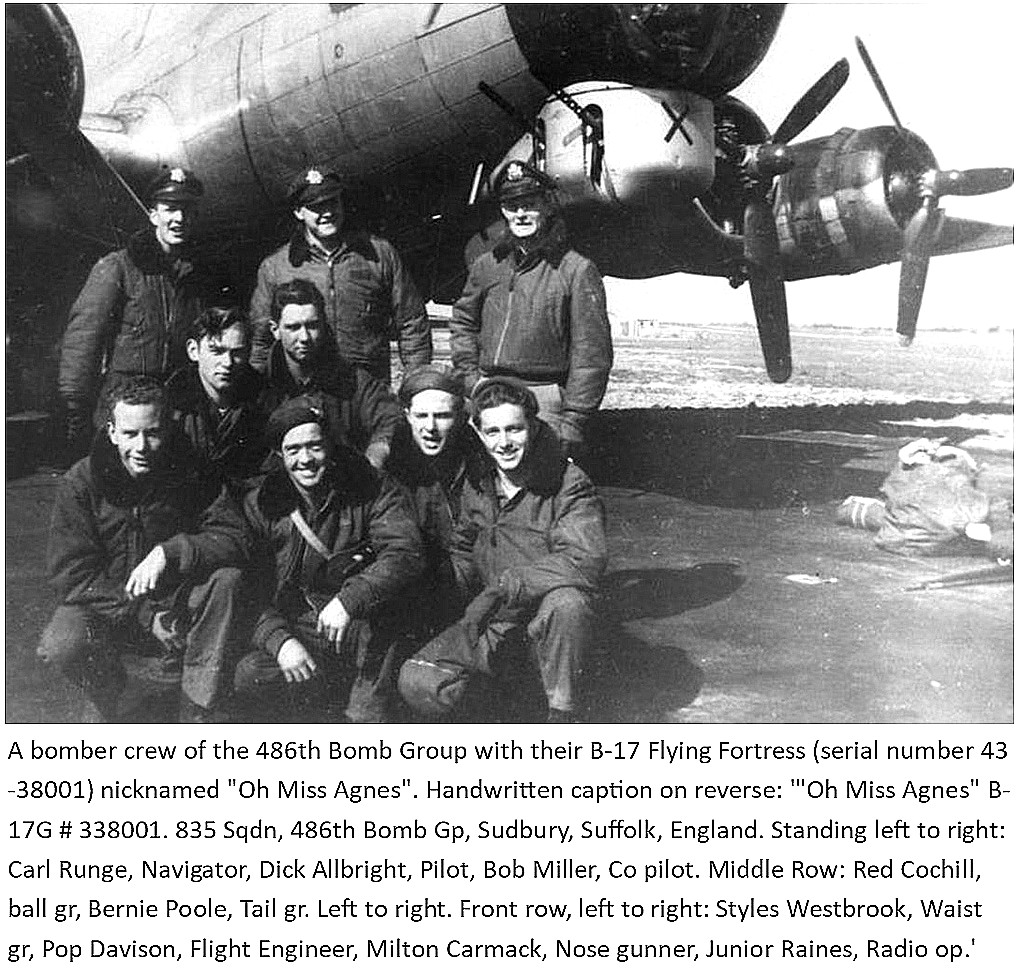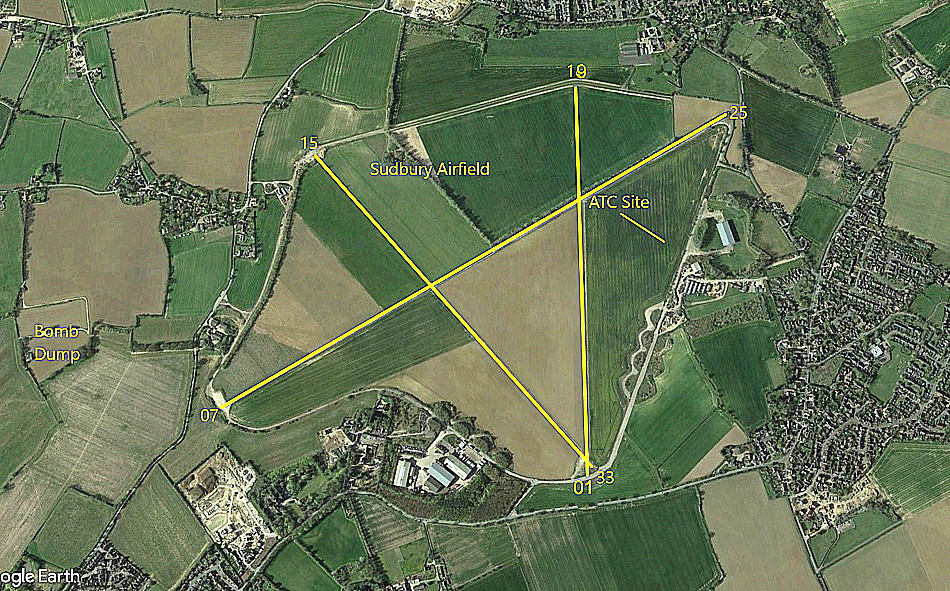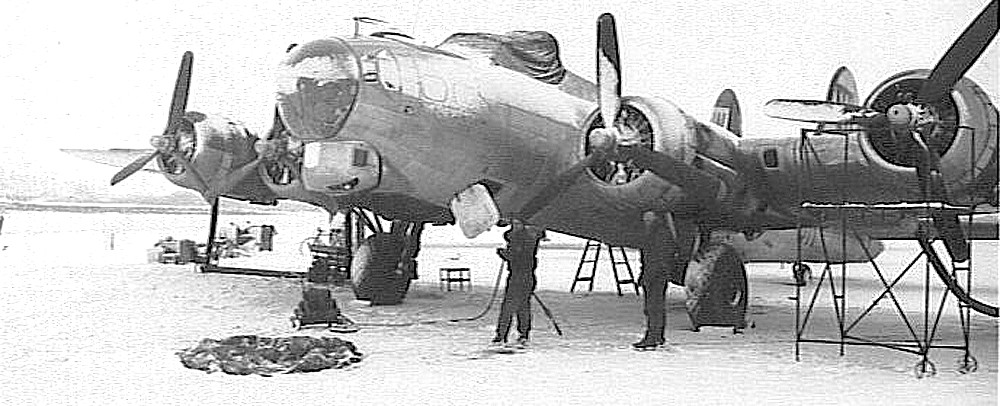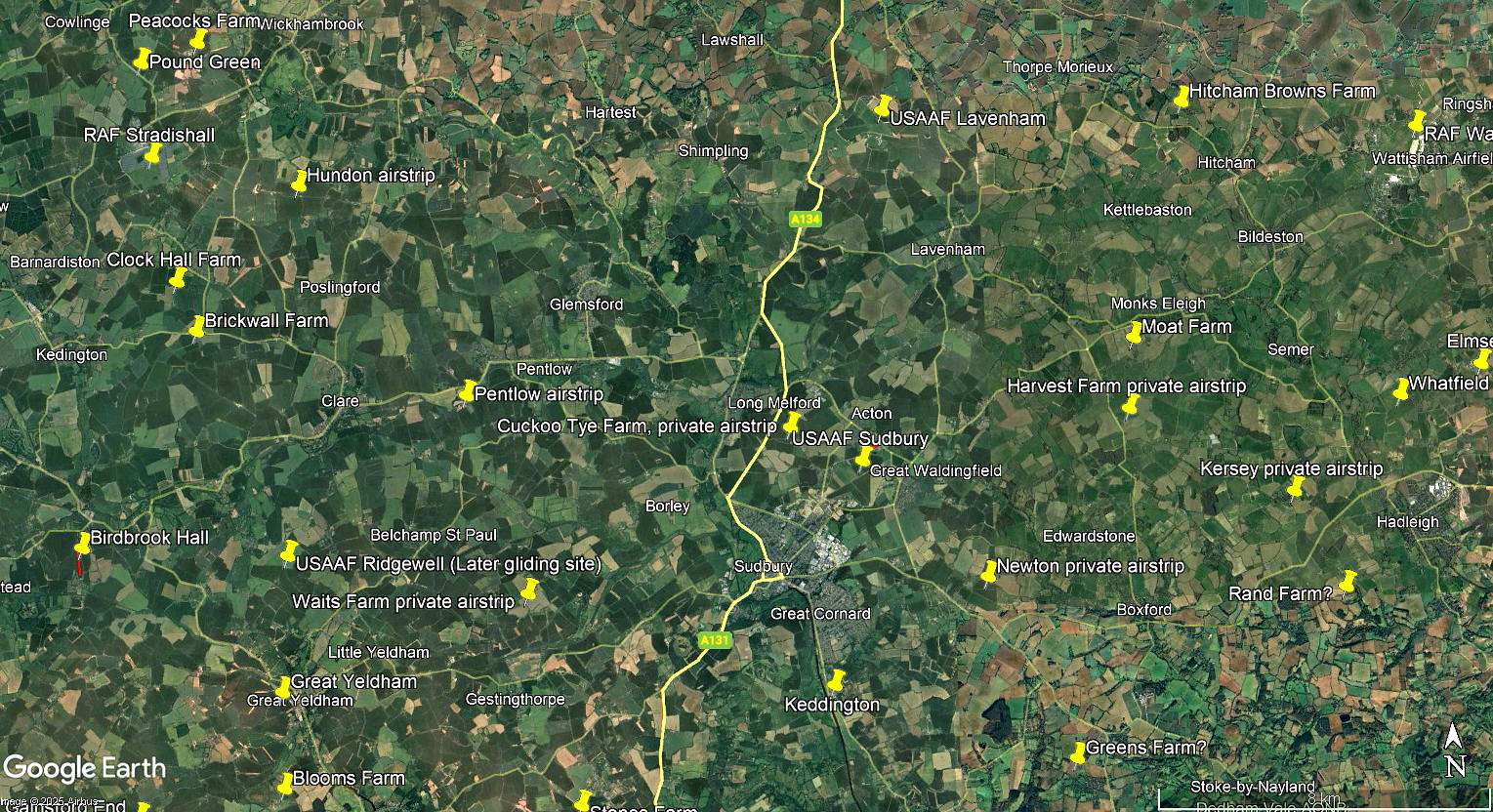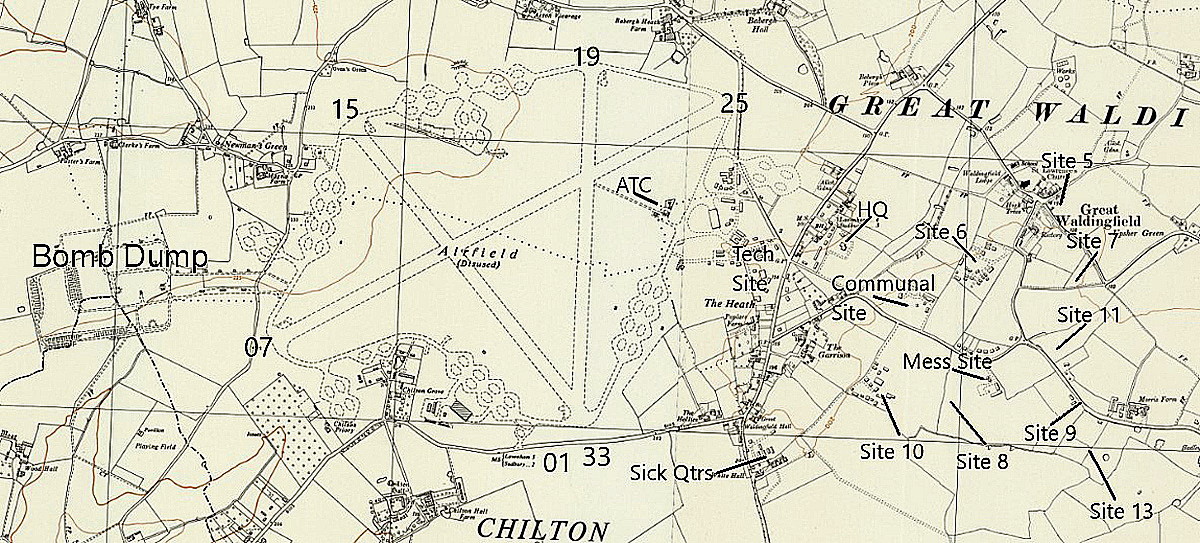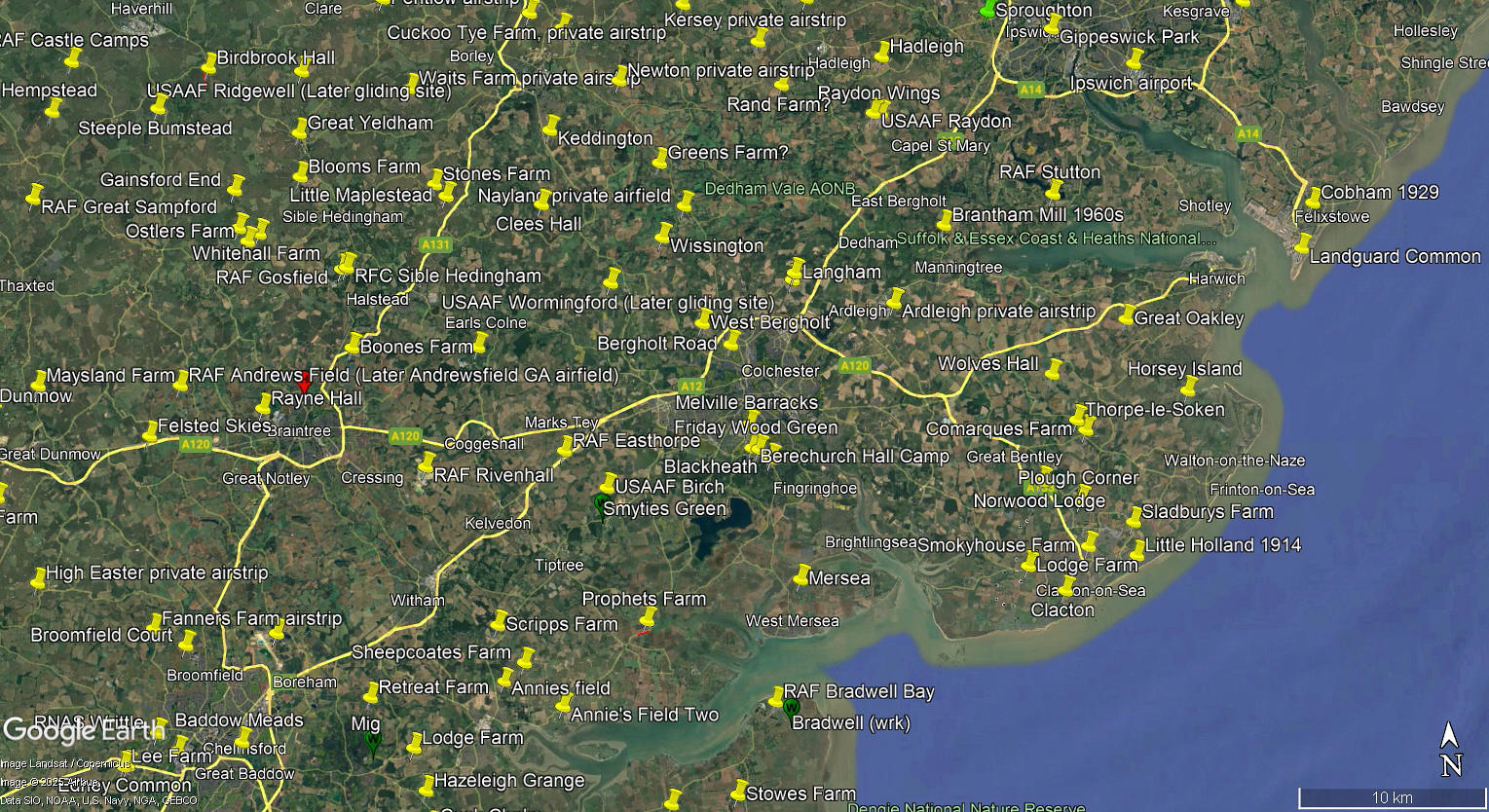Sudbury flying sites
Note: This map only shows the location of the WW2 airfield.
SUDBURY see also WAITS FARM (ESSEX)
SUDBURY: Forced landing site
NOTES: There is an account by Sir Alan Cobham in the book A Time To Fly published in 1978 which really is a corker. As an RAF instructor at MANSTON (KENT) shortly after WW1, he was instructed to lead a flight of seven Avro 504K's, the others flown by pupils, to their new base at NARBOROUGH (NORFOLK) - see my NARBOROUGH listing for the fuller story.
Just after reaching Sudbury his engine quit, and he had to make a forced landing. But, he had given orders that the student pilots had to follow him at all costs - and they did! He hadn't expected they would take his orders this literally! This is, I feel pretty certain about this, the only account of a forced landing resulting in seven aircraft arriving in the same field! Quite probably a unique occassion?
SUDBURY: Temporary aerodrome?
NOTES: On the 19th June 1933 Sir Alan Cobham’s No.2 Tour displayed in/near Sudbury. Does anybody now know where exactly? There is another somewhat interesting aspect about this Sudbury venue because generally speaking due to the highly intensive all-day and normally very long operating hours at each venue they usually ‘hopped’over fairly short sectors. In this case the No.2 Tour was displaying in Brighton the day before and Long Eaton near Nottingham the day after.
I wonder what factors convinced Sir Alan Cobham’s planning department that Sudbury was a ‘must’ visit venue? It’s not exactly on track from Brighton to Nottingham is it? And, in those days there was very little controlled airpace to worry about of course.This said often very little of the flight planning makes any sense on the Cobham Tours especially, so obviously(?) other more powerful forces were at work. Does anybody now know what these were?
AN ANSWER - IN PART AT LEAST
In early 2023 Mike Holder, a great friend of this 'Guide', took it upon himself to investigate what might be available to illustrate both the 1933 Sir Alan Cobham NAD, (National Aviation Day), event and the WW2 USAAF air base. Regarding the former, he has certainly provided the answer! So, here is a gallery to illustrate.
The photo of Brundon Mill is from The Foxearth and District Local History Society. The 'announcement' was published in the Suffolk and Essex Free Press on the 8th June 1933.
AN EXPANSIVE ARTICLE
This article was published, also in the Suffolk and Essex Free Press on the 22nd June 1933.
What I really liked about this article was that it gives impressions of flying by those taking advantage of the 'Free flights' being offered. Very few people in those days had any experience of flying, and they describe it in a most lovely way. Very much in the same way I experienced on my first flight in an Auster as a young lad. That burst of power, bouncing along the grass, then, very quickly, no sensation of speed at all as the earth fell away.
SUDBURY: Military aerodrome
Note: This picture (2018) was obtained from Google Earth ©
The picture clearly shows how the extent of the WW2 airfield is still clearly defined by the perimeter track some seventy years later, and indeed, the layout of the runways can be discerned.
Military user: 8th USAAF 92nd Bombardment Wing 486th Bomb Group
832, 833, 834 & 835 Sqdns (Boeing B-17 Fortresses & Consolidated B-24 Liberators)
Location: N of B1115, WNW of Great Waldingfield, S to SSW of Acton, 2nm N of Sudbury
Period of operation: 1944 to 1945
Runways: 07/25 1829x46 hard 01/19 1280x46 hard
15/33 1280x46 hard
A SHORT MICHAEL T HOLDER GALLERY
The aerial vertical photo is from the American Air Museum.
Photo One and Photo Two are also from the American Air Museum.
The local area and area views are from my Google Earth © derived database.
NOTES: I have a big problem understanding the basic facts here. I have always read that in WW2 all resources, (human and material), were usually stretched nearly to breaking point. At the same time I have read that by 1944 the ‘writing was on the wall’ regarding the outcome of the war in Europe.
But here we have a complete aerodrome built at a huge cost in all respects for the USAAF, and opened in 1944, (they had 2972 personnel here in late 1944 according to official records), but closed in 1945. In other words they used this aerodrome for less than two years and it was probably actually only fully operational for closer to one year!
This seems a huge waste of effort in every conceivable respect so what was the official, (or other?), justification for going ahead and constructing this aerodrome with such ample facilities?
We'd love to hear from you, so please scroll down to leave a comment!
Leave a comment ...
Copyright (c) UK Airfield Guide

